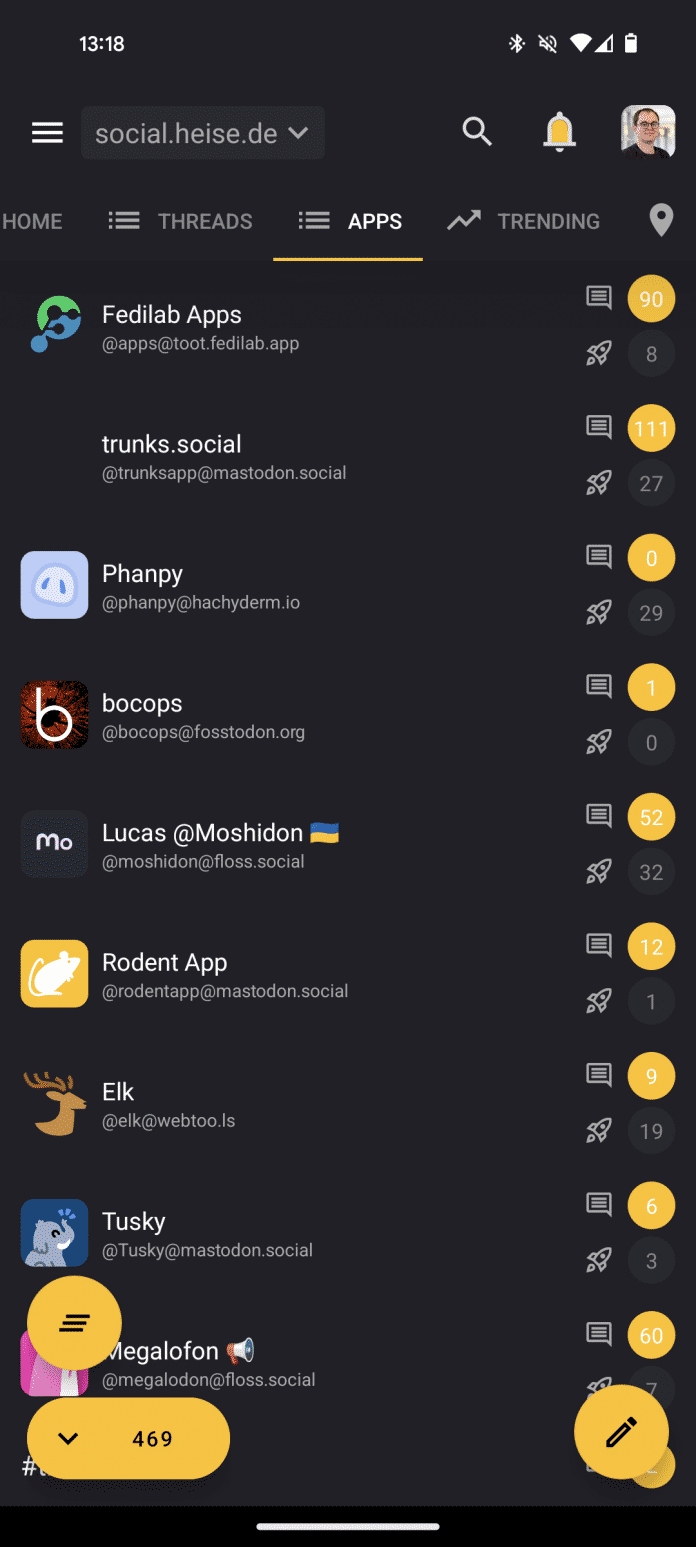Although there has been movement in the social network market since Elon Musk took over Twitter, it is more about who is similar enough to the short message service to inherit it. While it is mostly about which service has how many users, it is less often about technical innovations and attempts to expand Twitter’s original concept. The criticism of algorithmic timelines, automatic recommendations and measures to extend usage time does not subside. There have long been some interesting concepts, especially for Mastodon. Various applications use the openness of the Twitter alternative in Fediverse to do fundamental things differently.
Advertisement
Feel free to put it away for a while

(Image: Rodent)
Mastodon, for example, looks particularly unusual in the Rodent app out, at least if you want that. Although the application, which is only available for Android, has the usual modes, such as the one with a chronological timeline in which the posts of all followed accounts are arranged one after the other, what is unusual is something else. Only the most active of these accounts are listed one below the other and the numbers next to them show how many posts they have made or shared. This makes it possible to jump directly to the posts of those users who are particularly interested and at the same time reduces the fear of missing something (“FOMO”). The view can also make it clear how few accounts actually fill your own timeline.

The separately displayed boosts on Phanpy
Phanpy introduces another innovation, a fancy interface for Mastodon, which is only available as a web interface, but can also be installed on the smartphone as a PWA. If you scroll through the timeline from top to bottom, as usual on Twitter, it is repeatedly broken up by small galleries. They collect posts that only ended up in the timeline via the share function and do not necessarily come from accounts that you follow. This noticeably loosens up the otherwise very rigid timeline and at the same time distinguishes posts that actually come from followed accounts from those that were shared in your own timeline.

A generated summary on Phanpy
Another interesting function Phanpy calls “catch-up”. Up to a maximum of 800 posts from the last one to twelve hours can be summarized in a special view. Here you can filter according to specific accounts and other criteria – including “information density”, i.e. preferably short posts. You can also have a direct list of those links – mostly to news sites – that were shared particularly often during the period. The function is intended to make it easy to get an overview of what you missed after a break from Mastodon. Just like Rodent, the point is that Mastodon can be put aside for a while without fear of missing something.

Filters in trunks
Trunks (for iOS, Android and the browser) on the other hand relies on even more filters than the competition: Here you can not only choose directly in the timeline which type of posts – i.e. original, shared, posted as a reply or all – you want to see, there are also your own options under posts, Bringing order to diversity. Using filters that can be selected there, you can, among other things, display the “best” or “most controversial” answers to a post first; the classic chronological view is also available. The continuously developed app can also be visually customized with themes.
Different types of access
What is also unusual for classic social networks, but completely normal for Mastodon as part of the so-called Fediverse, are the large differences in the display between the various access options. Not only are there many different ways to make the application look like Twitter. Different apps also have different focuses: For example, you can easily follow Mastodon accounts from the Instagram alternative Pixelfed, only their posts are brought to the fore with images. The magazine app Flipboard, in turn, can also be linked to Mastodon, but then focuses on online reports that are linked to from there.
The examples show how Mastodon can benefit from the fact that the underlying software is free and open to third parties. Anyone who wants to develop clients for this does not have to worry about being suddenly locked out, as happened with Reddit and Twitter last year. In addition, the software provided by Mastodon itself is not necessarily the most visually appealing or the most comprehensive in terms of content – for example, you cannot use it to time posts. This ensures that alternative types of access are tried out, which these applications benefit from. If Meta’s short messaging service Threads is connected to Mastodon in this country, interest in such software is likely to increase again. So it’s worth keeping your eyes open.
(mho)

